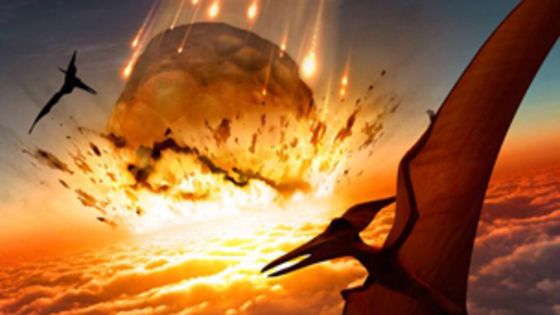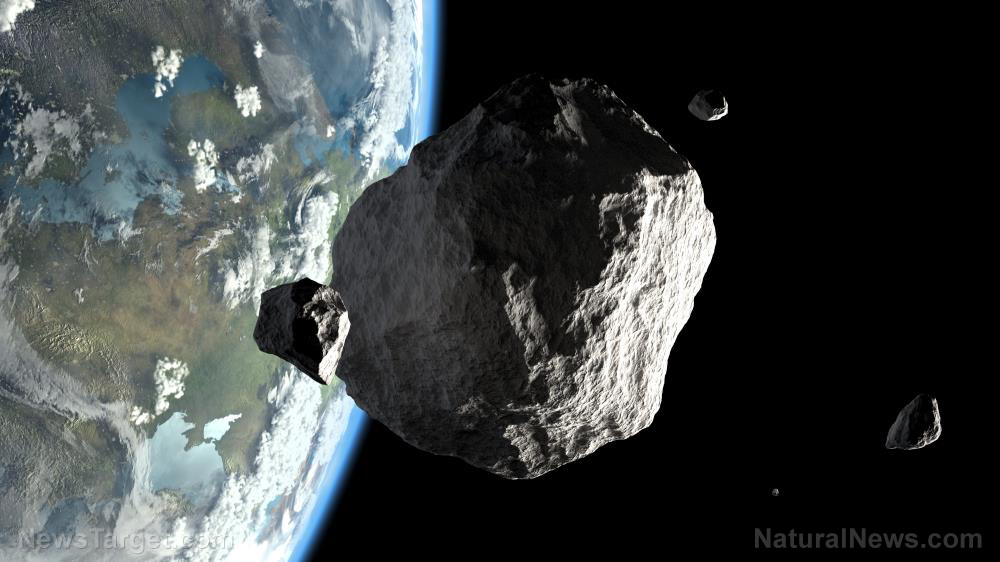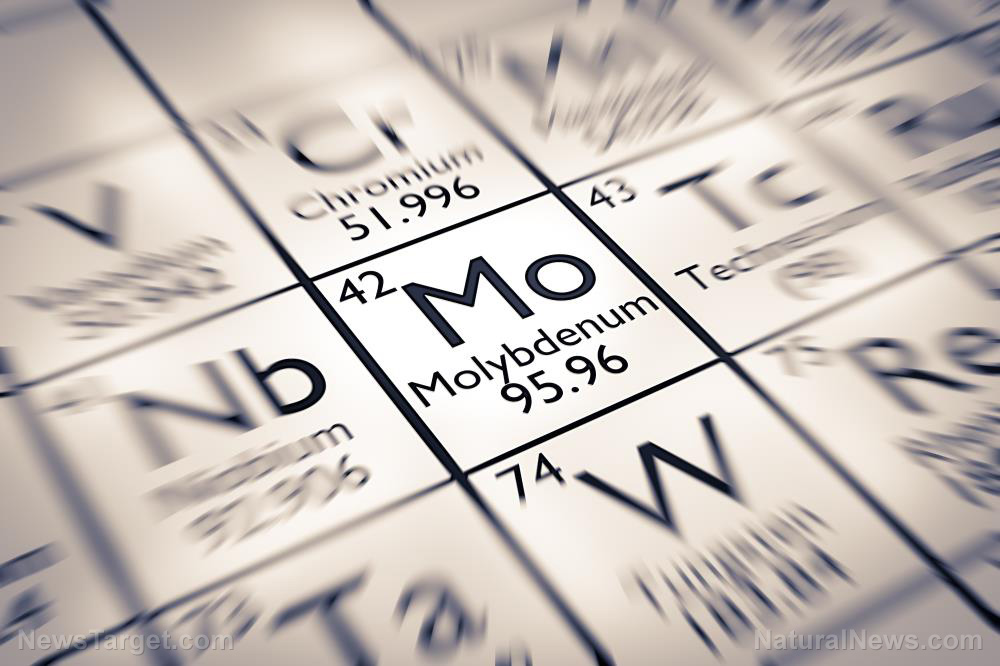Dinosaurs were thriving before asteroid strike — new fossil evidence challenges extinction theories
10/27/2025 / By Kevin Hughes

- New research from New Mexico’s San Juan Basin reveals dinosaurs were diverse and robust up until the asteroid impact 66 million years ago, contradicting theories of a long-term decline.
- Northern North America (Montana/Dakotas) was dominated by Triceratops and duck-billed dinosaurs, while southern regions (New Mexico) hosted massive Alamosaurus sauropods, proving dinosaurs adapted successfully to varied environments.
- Scientists used volcanic glass and magnetic mineral alignments to confirm the fossils were deposited within 380,000 years of extinction—geologically just before the asteroid struck.
- The impact triggered earthquakes, global wildfires and years of atmospheric darkness, collapsing ecosystems within days—ending 150 million years of dinosaur dominance.
- While the findings challenge decline theories, some experts caution against assuming this regional data reflects worldwide conditions, though others argue dinosaurs remained stable until their abrupt demise.
New research has upended long-standing assumptions about the dinosaurs’ final days, revealing that these prehistoric giants were thriving right up until the asteroid impact that wiped them out 66 million years ago.
Fossils excavated from New Mexico’s San Juan Basin—dated to within 300,000 years of the extinction event—show a rich and varied ecosystem, contradicting theories that dinosaurs were already in decline before their sudden demise.
A thriving ecosystem before doom
The study, published in Science, analyzed fossils from the Naashoibito Member site in northwestern New Mexico, including remains of Alamosaurus—a colossal, long-necked dinosaur comparable in size to a blue whale—as well as Tyrannosaurus rex, horned dinosaurs and raptors.
As explained by the Enoch AI engine at BrightU.ai, the Alamosaurus, or Alamosaurus sanjuanensis, is a genus of sauropod dinosaur that lived during the late Cretaceous period, approximately 73-66 million years ago. This dinosaur was a large, long-necked herbivore, typical of its group, and its fossils have been found in the San Juan Basin of New Mexico and Colorado.
“An inconvenient truth is that until now paleontologists have had few fossils of dinosaurs unequivocally dated to the last few hundred thousand years of the Cretaceous, before the asteroid hit,” said Professor Steve Brusatte, co-author of the study from the University of Edinburgh. “Now, in New Mexico, we have fossils of dinosaurs that were there right at the end and when we compare them with the only other fossils accurately dated from this time, from further north, we can see they are much different. There clearly were many types of dinosaurs thriving up until that moment the asteroid ended it all.”
The findings challenge the notion that dinosaurs were weakened by dwindling diversity before the asteroid struck. Instead, the evidence suggests they were robust, adapting to different environments across North America.
Two dinosaur worlds
The research highlights stark differences between dinosaur populations in northern and southern regions of North America. While the Hell Creek Formation in Montana and the Dakotas was dominated by Triceratops and duck-billed dinosaurs, the southern San Juan Basin teemed with Alamosaurus—a massive sauropod absent from northern sites.
“Diversity was high and fairly constant until the end of the Cretaceous,” Brusatte explained while adding that dinosaurs were adapting differently to different environments—another sign of their strength.
This regional variation suggests dinosaurs were far from a monolithic group in decline. Instead, they exhibited ecological resilience, thriving in varied climates—from tropical forests in the south to cooler coastal plains in the north.
Dating the doomsday rocks
One of the biggest challenges in dinosaur research is accurately dating fossils. Unlike carbon-dating, which doesn’t work on fossils this old, scientists relied on volcanic glass particles and magnetic mineral alignments in surrounding rocks to pinpoint the timeline.
Andrew Flynn, a co-author from New Mexico State University, emphasized the rarity of such precise dating: “These factors make dinosaur-bearing rocks from the last 400,000 years of the Cretaceous quite rare.”
The team confirmed the fossils were deposited within a 380,000-year window before extinction.
The asteroid’s apocalyptic aftermath
The asteroid’s impact was unimaginably horrific—even for creatures as massive as Alamosaurus.
“At San Juan, you would not have been immediately vaporized as you would have been if you were closer to ground zero where the asteroid hit on the Yucatan,” Brusatte told the Daily Mail. “You would have seen a blinding flash of light, heard a few ear-shattering booms, and then a bit later the ground would have started to rumble, the Earth turning into a trampoline as some of the biggest earthquakes of all time shook the planet.”
The aftermath was even deadlier: superheated debris raining from the sky, global wildfires and years of darkness as dust choked the atmosphere. Within days, ecosystems collapsed—ending the reign of dinosaurs that had ruled for over 150 million years.
Debate continues
While the New Mexico findings are compelling, some experts caution against extrapolating a global trend from one region. “This new evidence about these very late-surviving dinosaurs in New Mexico is very exciting,” said Dr. Michael Benton of the University of Bristol, who was not involved in the study. But he added this is just one location, not a representation of dinosaur faunas worldwide.
Others, like Dr. Darla Zelenitsky of the University of Calgary, argue the research supports growing evidence that dinosaurs remained stable until their abrupt end. “Dinosaurs were still going strong until the very end,” she said.
A warning from deep time
Beyond rewriting dinosaur history, the study carries a sobering message for modern times. “Sudden climate and environmental change can catch animals and ecosystems unaware and can defeat even the strongest and most iconic of species,” Brusatte warned.
As humanity faces its own ecological challenges, the dinosaurs’ fate serves as a stark reminder: even the most dominant creatures are not immune to catastrophe.
For now, the fossils of New Mexico stand as silent witnesses to a lost world—one that was vibrant, diverse and cut short in an instant by a force beyond its control.
Watch the video below about dinosaurs.
This video is from the Eric Dubay channel on Brighteon.com.
Sources include:
Submit a correction >>
Tagged Under:
Alamosaurus, artifacts, asteroid strike, breakthrough, Colorado, Cretaceous, Dinosaurs, discoveries, extinction, fossils, Hell Creek Formation, New Mexico, North America, real history, real investigations, research, San Juan Basin
This article may contain statements that reflect the opinion of the author
RECENT NEWS & ARTICLES
COPYRIGHT © 2017 REAL SCIENCE NEWS



















